Facilitating organisational fluidity with computational social matching
Forschungswerkstatt 2019/20, Freie Universität Berlin
Jukka Huhtamäki
D.Sc. (Tech.)
Tampere University
linkedin.com/in/jukkahuhtamaki




Huhtamäki, J., Olsson, T., & Laaksonen, S.-M. (2020). Facilitating Organisational Fluidity with Computational Social Matching. In H. Lehtimäki, P. Uusikylä, & A. Smedlund (Eds.), Society as an Interaction Space: A Systemic Approach. Springer.
Ontological foundation
Social structure of organizations
Organizational fluidity
Schreyögg & Sydow (2010): "… represents a reaction to the increasing complexity and environmental turbulence that organizations have to master […] highly flexible and fluid organizational forms, based on relentlessly changing templates, quick improvisation, and ad hoc responses […] in sharp contrast to other recent organizational research that emphasizes identity, path dependence, economies of specialization, and recursive practices"
Organizational social structure
Communicative Constitution of Organizations (CCO): communication is the fundamental constitutive force that brings organisations into being (Ashcraft, Kuhn, & Cooren, 2009; Putnam, Nicotera, & McPhee, 2009)
Organizations as networks: the social structure of an organization includes individual actors that are connected to each other through communication (Borgatti & Foster, 2003; Lee & Hassard, 1999; Powell, 1990)
How to facilitate the formation of the social structure in fluid organizing?
Or: … of fluid organizations?
Social matching
Computational social matching
"Social matching systems bring people together in both physical and online spaces" (Terveen & McDonald, 2005)
-
Professional Social Matching refers to the "matching of individuals or groups for vocational collaboration and co-creation of value"
recruitment,
headhunting,
community building, and
mentoring,
advisory relationships
general networking
(Olsson, Huhtamäki & Kärkkäinen, 2018)

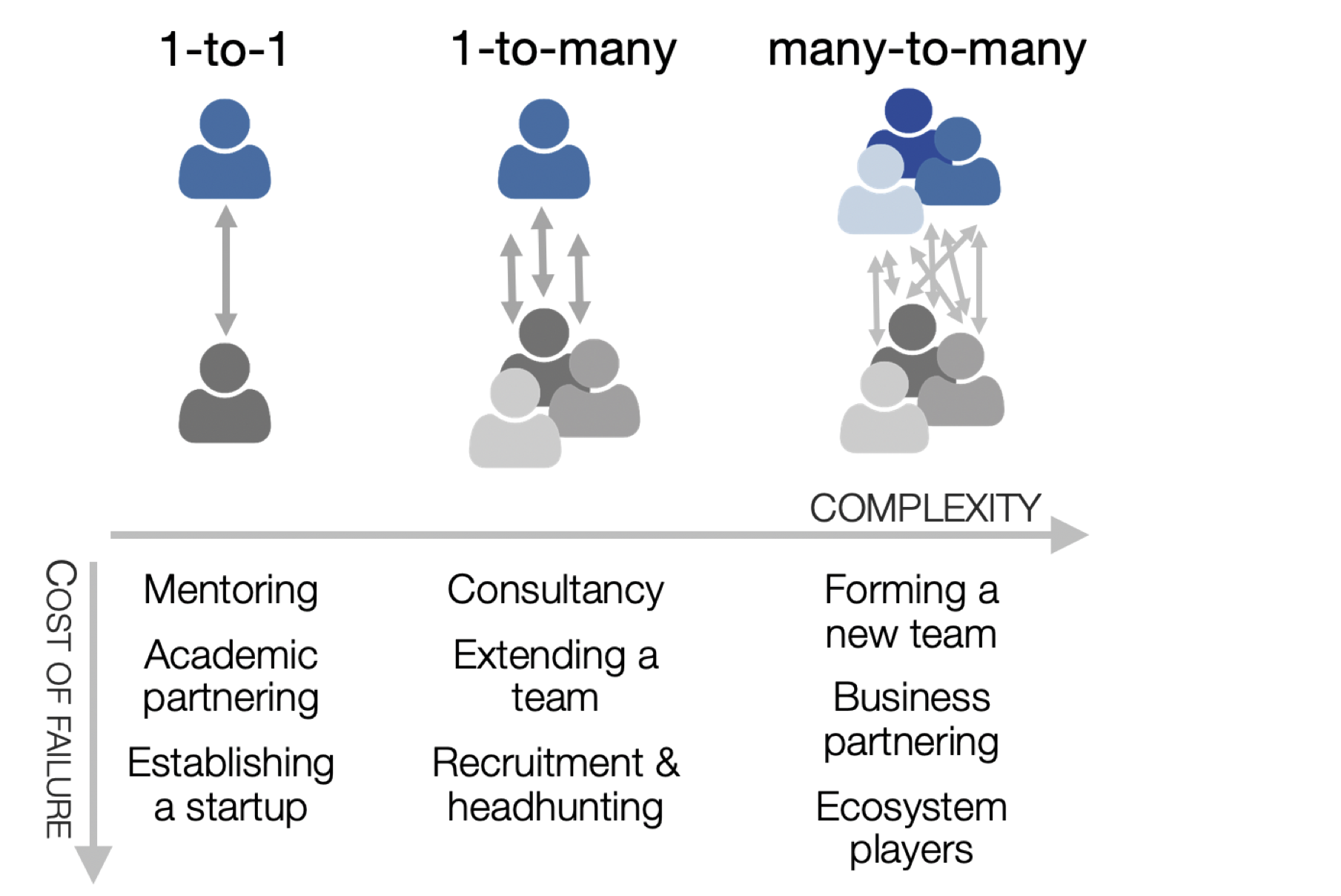
Social matching in knowledge work
Goals: social matching in knowledge work
-
Enable unexpected social encounters in professional life
... without amplifying the emergence of echo chambers (homophily, triadic closure)
... by helping users avoid human bias in decision-making and identifying optimal similarity-diversity between matched people
Design requirements: context-sensitivity, systemic perspective, user-system cooperation, proactive persuation
(Olsson et al., 2020)
Social matching strategies
Social matching strategies
(0. Monitoring (cf. Screyögg and Sydow, 2010))
1. Social exploration
2. Network theory-based recommendations
3. Machine learning-based recommendations
Social theories of organizing
Social structure core concepts
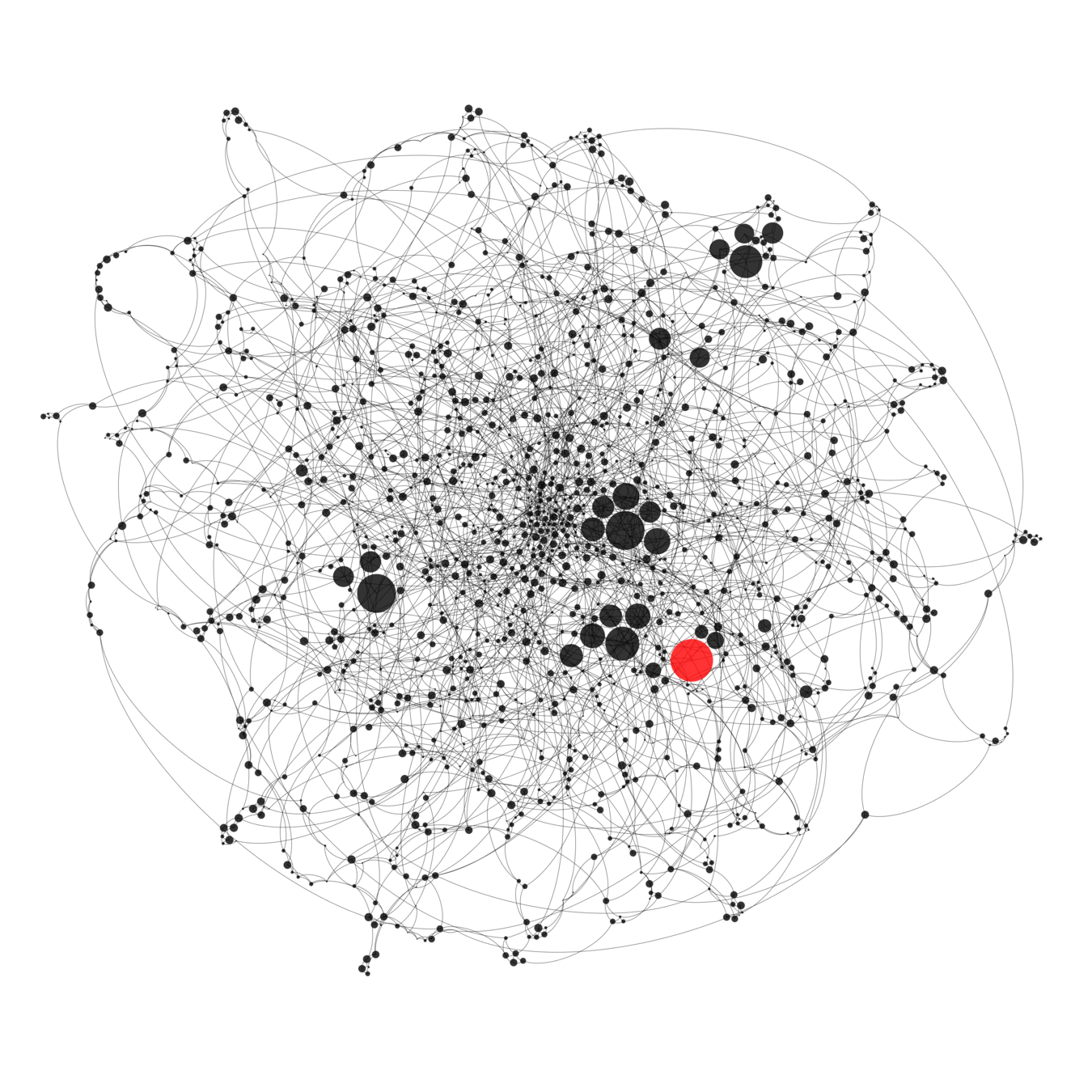
Weak ties (Granovetter, 1973)
Homophily (McPherson, Smith-lovin & Cook, 2001)
Triadic closure (Granovetter, 1973)
-
Echo chambers (Sunstein, 2009)
Cyberbalkanization (Van Alstyne & Brynjolfsson, 1996)
Filter bubbles (Pariser, 2011)
Structural holes (Burt, 2001)
Social structure in knowledge work

-
Weak ties are conduits of novel information (Aral, 2016)
-
Brokering structural holes is beneficial for individuals (Burt, 2004)
-
… however, brokerage may also torture the actor (Krackhard, 1999)
-
Access to heterogeneous knowledgde drives innovation performance (Rodan & Galunic, 2004)
-
Diversity-bandwidth tradeoff is needed to navigate strong and weak ties (Aral & Van Alstyne, 2011)
Discussion & Implications
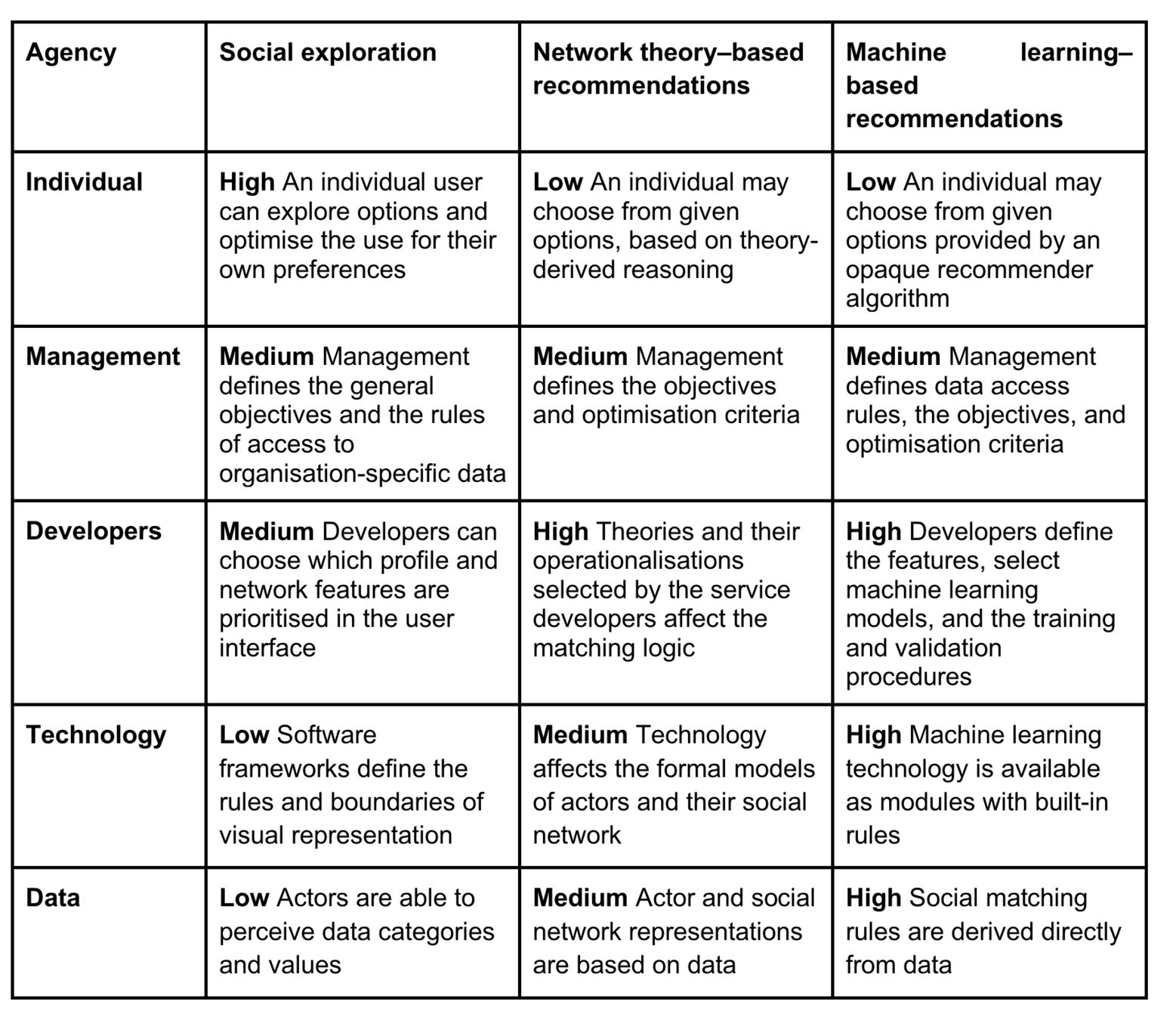
Ethical considerations
1. Monitoring is a means of organizational control (Leclercq-Vandelannoitte et al., 2014; Zuboff, 2015)
2. Privacy vs. the need for high-quality data on interactions between organizational actors
3. Social matching is a form of profiling and prone to algorithmic biases
Implications
1. Social matching is dependent on high-quality data on actors, their interactions, and the measured quality of these interactions
2. Social matching should counterbalance human biases in network formation and continuosly balance between similarity and diversity
3. Move gradually from monitoring and social exploration to network theory-based and machine learning-based recommendations
Toward systemic serendipity
Serendipitous social encounters
Title
Content
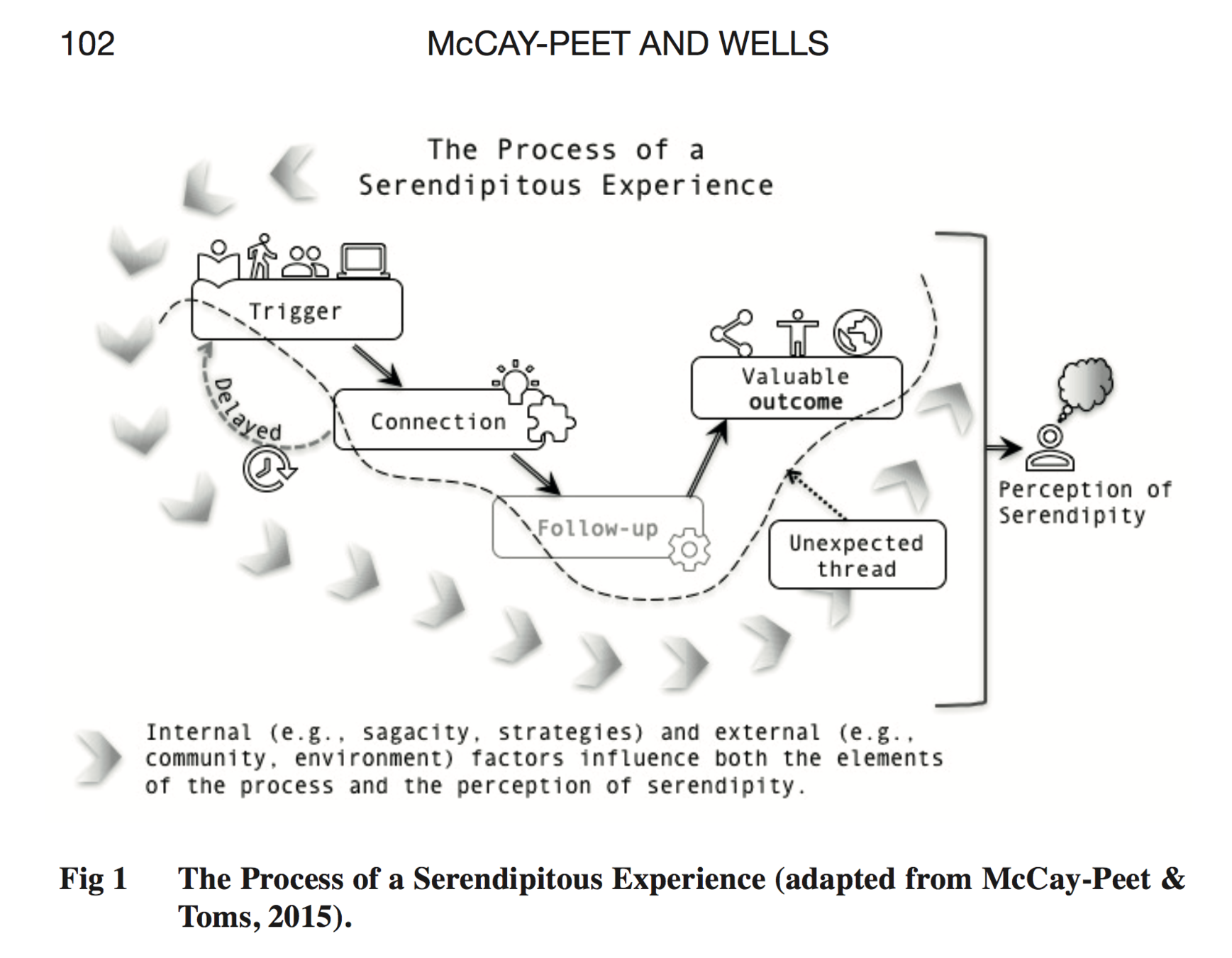
How to take the McCay-Peet & Toms (2015) serendipity model to social serendipity to ecosystem level?
Jukka Huhtamäki
D.Sc. (Tech.)
Tampere University
linkedin.com/in/jukkahuhtamaki

Egocentric social structures
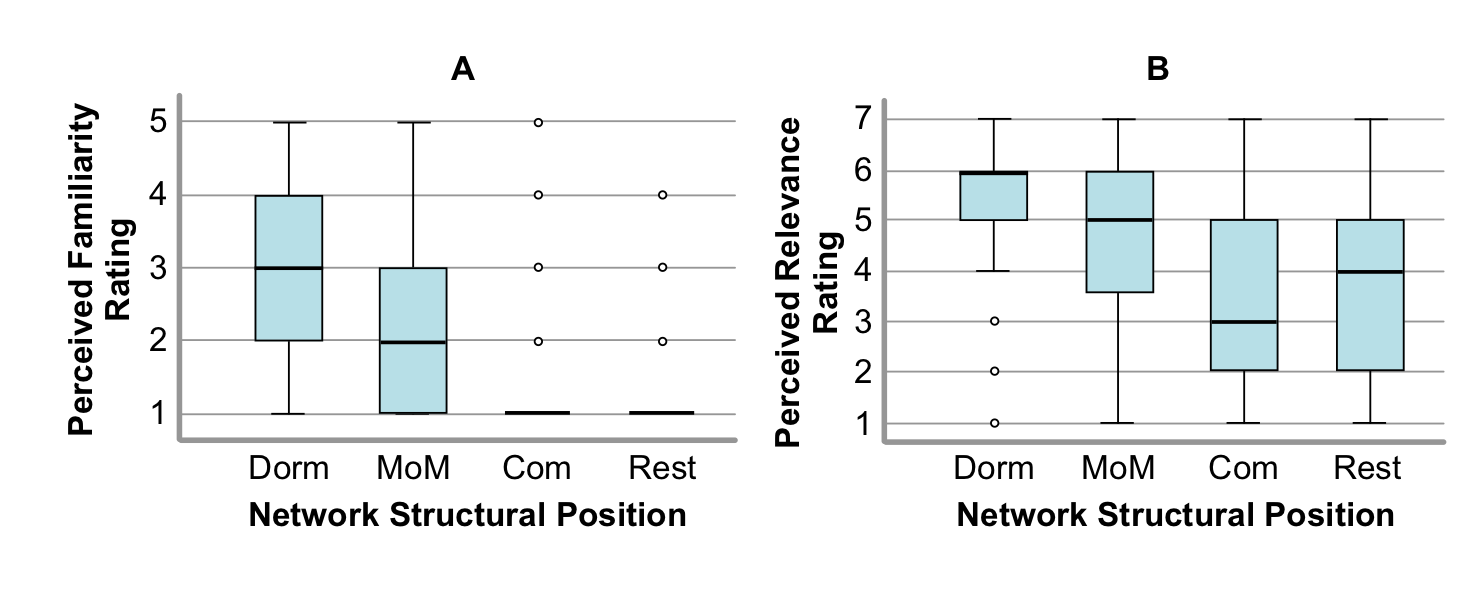
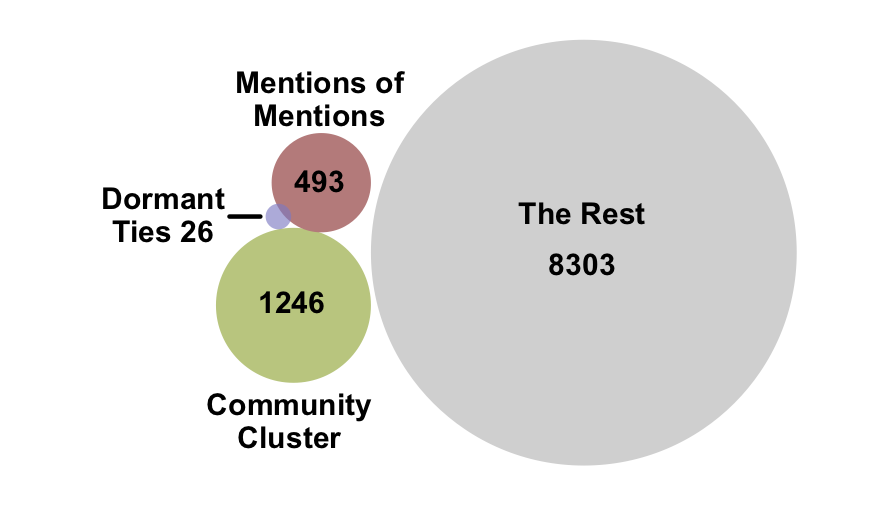
Skenderi, E., Olshannikova, E., Olsson, T., Huhtamäki, J., Koivunen, S., Yao, P., & Huttunen, H. (2019). Investigation of Egocentric Social Structures for Diversity-Enhancing Followee Recommendations. In Adjunct Publication of the 27th Conference on User Modeling, Adaptation and Personalization - UMAP’19 Adjunct (pp. 257–261). New York, New York, USA: ACM Press.
Content-based similarity

Olshannikova, E., Olsson, T., Huhtamäki, J., & Yao, P. (2019). Scholars’ Perceptions of Relevance in Bibliography-based People Recommender System. Computer Supported Cooperative Work (CSCW), 28(3–4), 357–389.
#humanpotentialunlimited
Facilitating organisational fluidity with computational social matching
By Jukka Huhtamäki
Facilitating organisational fluidity with computational social matching
Presentation at the Forschungswerkstatt 2019/20, Freie Universität Berlin.
- 776



